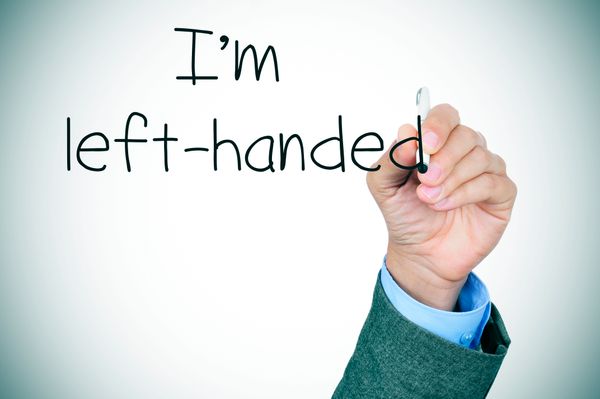 WHY ARE SOME PEOPLE LEFT-HANDED?
WHY ARE SOME PEOPLE LEFT-HANDED?
This practice still persists in many places around the world. Even language discriminates: the Italian word for left, "sinistra", comes from the latin word for "sinister" while in some Spanish countries, to do something "por izquierda" or to the left, is synonymous with doing something shady. In our own English, "right" literally means correct.
So why are one in 10 of us lefties?
The first thing to know is that this 10 percent ratio is fixed the world over, giving credence to the idea of a genetic basis for handedness. Several studies involving twins have shown that 25 percent of handedness can be explained by a person’s genes. Human geneticist Silvia Paracchini from the University of St Andrews in Scotland says this number is surprisingly low, but has been proven consistent across many studies.
Paracchini says early research expected to find a gene that directly determined handedness. But - with 100,000 people around the world having now had their genes sequenced – the fact that such a gene hasn’t been discovered suggests that there isn’t one. "The reason why it fascinates us is that we don't really understand it. It’s fascinating but also puzzling," she said in a speech to the Royal Society in London in February.
Paracchini says, as an Italian whose speaks with her hands, it’s no surprise she now researches handedness. Working with a left-handed PhD student, her lab has used a dataset originally intended for dyslexia research to try to determine the genetic basis of handedness.
Why is right-handedness so much more common, she questions. "There must be an evolutionary advantage."
What they’ve found is the DNA that influences handedness is the same that determines our body’s asymmetry. "We look symmetric, but if we look inside at our organs there's lots of asymmetry," says Paracchini.
A rare condition called situs inversus may hold the key. Affecting 1 in 20,000 people – including Spanish-born singer Enrique Iglesias - people with situs inversus have their major organs mirrored from their normal positions. So, for example, the heart would be on the right side of the body, or the liver and gall bladder are on the left side.
Paracchini and her team have found that the part of the genetic code that’s abnormal in people with situs inversus is the same part that affects handedness. Left-handed people, as a result of this asymmetry, also have larger corpus callosum – a thick band of nerve fibres in the brain that divides the left and right hemispheres of the cerebrum. This part is actually 11 percent - or 25 million nerve fibres - larger in lefties, and causes communication between their two brain hemispheres to be faster.
Contrary to what had previously been assumed, having a dominant hand is not specific to humans. There are lefty and righty animals as well. Paracchini says this makes sense: It would be a waste to have both hands work equally well, she says. Such duplication would be unnecessary in terms of evolution.
She also says any discrimination against lefties couldn’t be more unfounded. "Left-handed people have advantages in some sports and they can be more skilled in certain tasks as their brains are more plastic," she says, pointing to them having had to live in a world designed for right handed people. "The brain can adapt, it needs to adapt."
Comments
Post a Comment